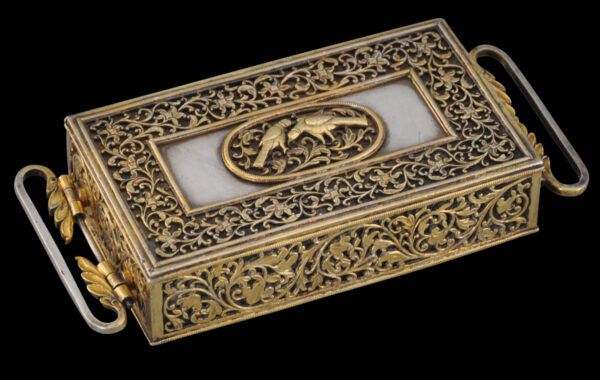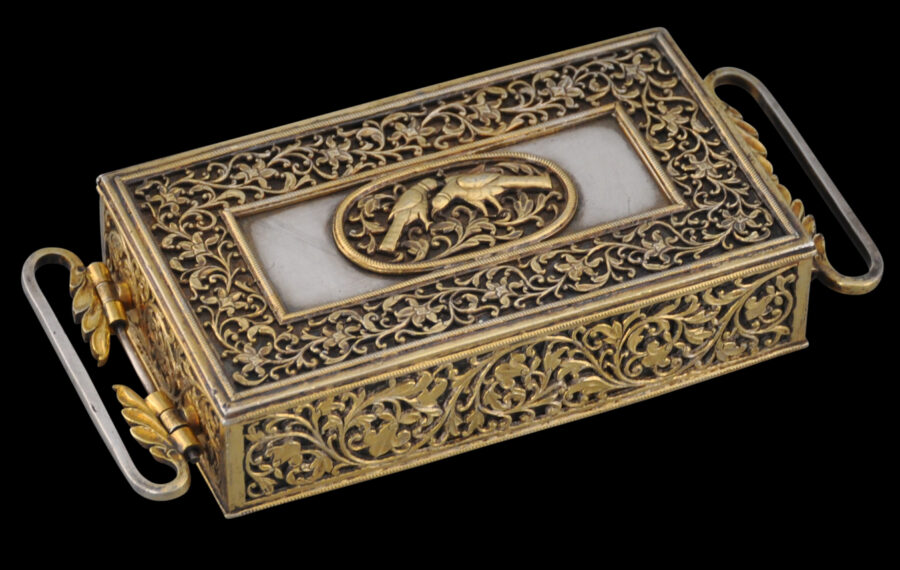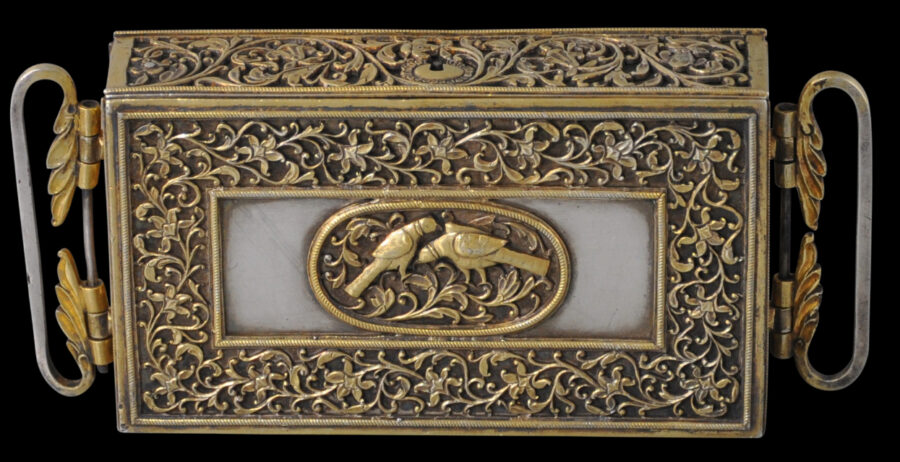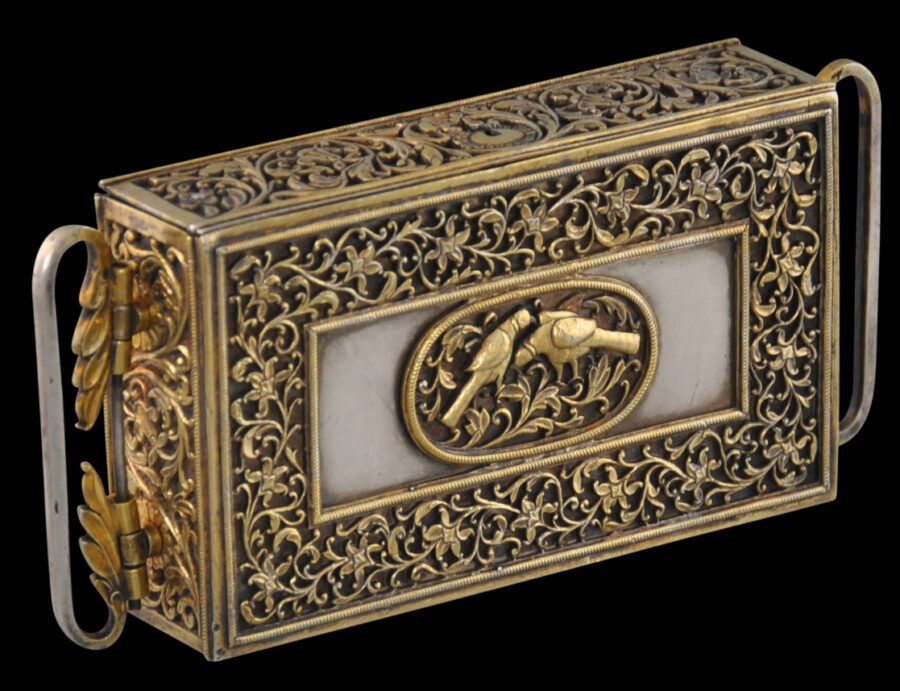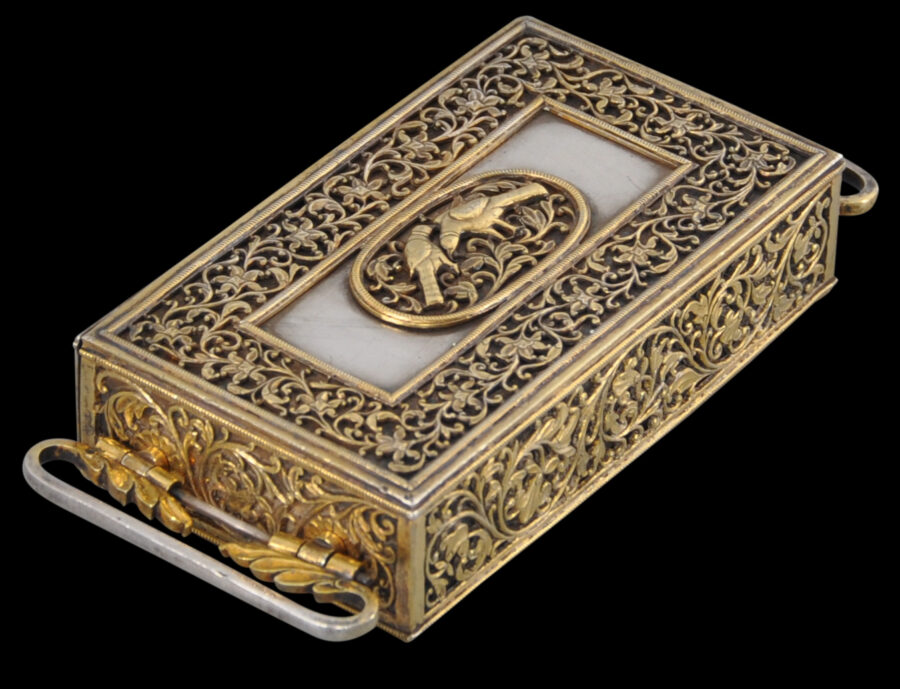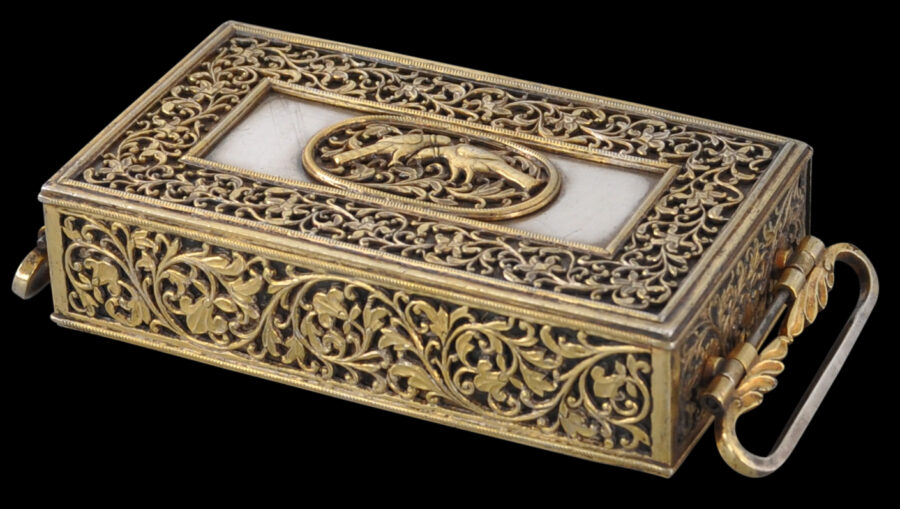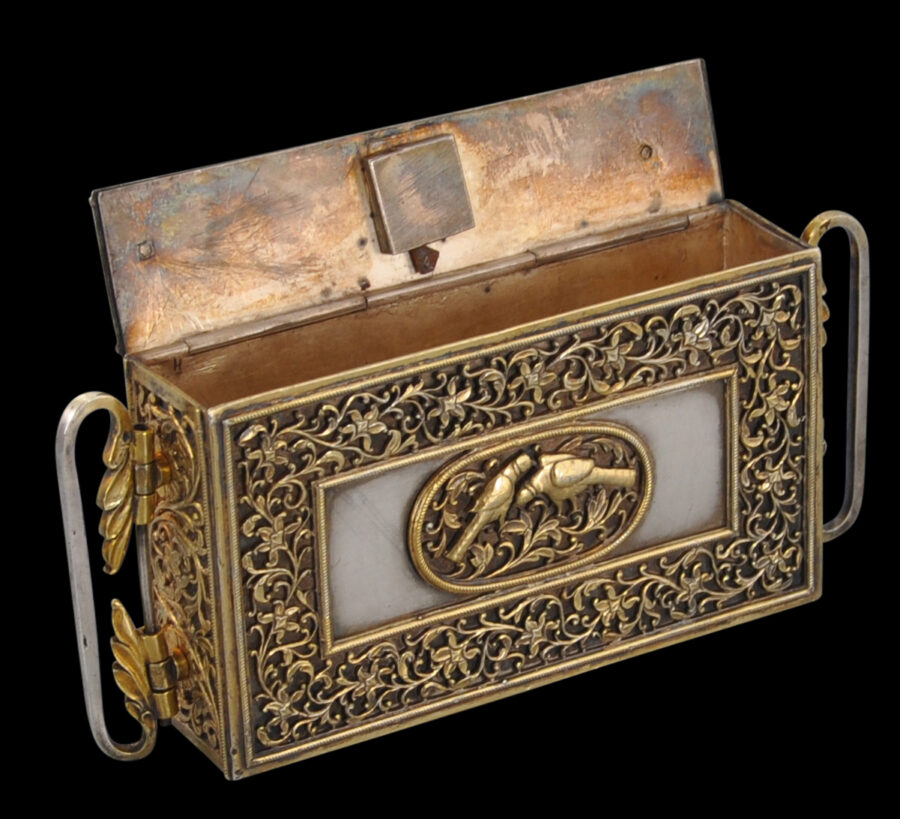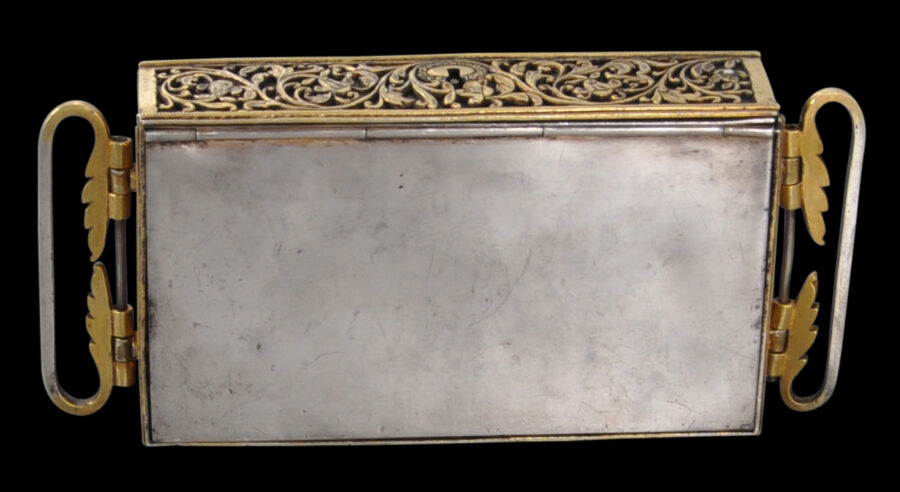This spectacular box is of silver and parcel-gilded and chiselled silver. It is an exceptional example of 18th century courtly silversmithing. The front and all sides are encased in chiselled, pierced floral and leaf scrollwork that has been gilded. The chiselling has allowed the work to be faceted giving it almost a three-dimensional quality. The centre of the front of the box has an oval plaque decorated with a pair of Eurasian collared doves which are native to India.
The work is similar though arguably superior to that seen on a princely sword fitting illustrated in Markel (2010, p. 202) which is attributed to Lucknow.
The reverse of the box is plain. The lid is hinged and has a lock.
A silver loop with chiselled, gilded leafy flourishes is on each side of the box. These would have allowed the box to be strapped to the body of a carrier.
Several aspects of this box point to it having been used to carry messages rather than say cartridges or gun powder. The walls of the box are of thick, heavy-gauge silver. The presence of a lock (rudimentary as it is by later standards) allowed the lid to be locked closed. It is likely that the sender had a key, and the recipient had a key, but the messenger or courier did not. The side loops, elaborately decorated though they are, are robust and were designed to permit the messenger to strap the box across his chest whilst riding horseback to the message’s intended recipient.
The imagery of a pair of doves on the front also is suggestive of communication between two parties – perhaps two lovers.
Doves were kept in northern India for their pleasing cooing, and the keeping and flying of pigeons was a popular pastime in Mughal India too. Professional keepers of pigeons were called kabootarbaz. The Mughal Emperor Akbar was fond of pigeon flying and is said to have kept 20,000 pigeons. The rulers of Lucknow similarly kept racing pigeons.
The box was produced for a princely house either in Mughal India or in nearby Lucknow. The vitality of the design of the silverwork points to a Lucknow provenance. According to Markel (2010, p. 200), ‘The vibrant, flowing floral imagery of Lucknow transmuted the orchestrated severity of Mughal flowering plants to produce a vitality of form and spirit far removed from the somber products of the Mughal ateliers’.
The box is in excellent condition. The gilding has softened with time and has a lovely hue. This is a splendid, museum-worthy item. It is the only box of its type that we have encountered.
References
Markel, S. et al, India’s Fabled City: The Art of Courtly Lucknow, LACMA/DelMonico Books, 2010.
Smith, R.V., ‘Of pigeons, kites and flights,’ The Hindu, January 6, 2013.


